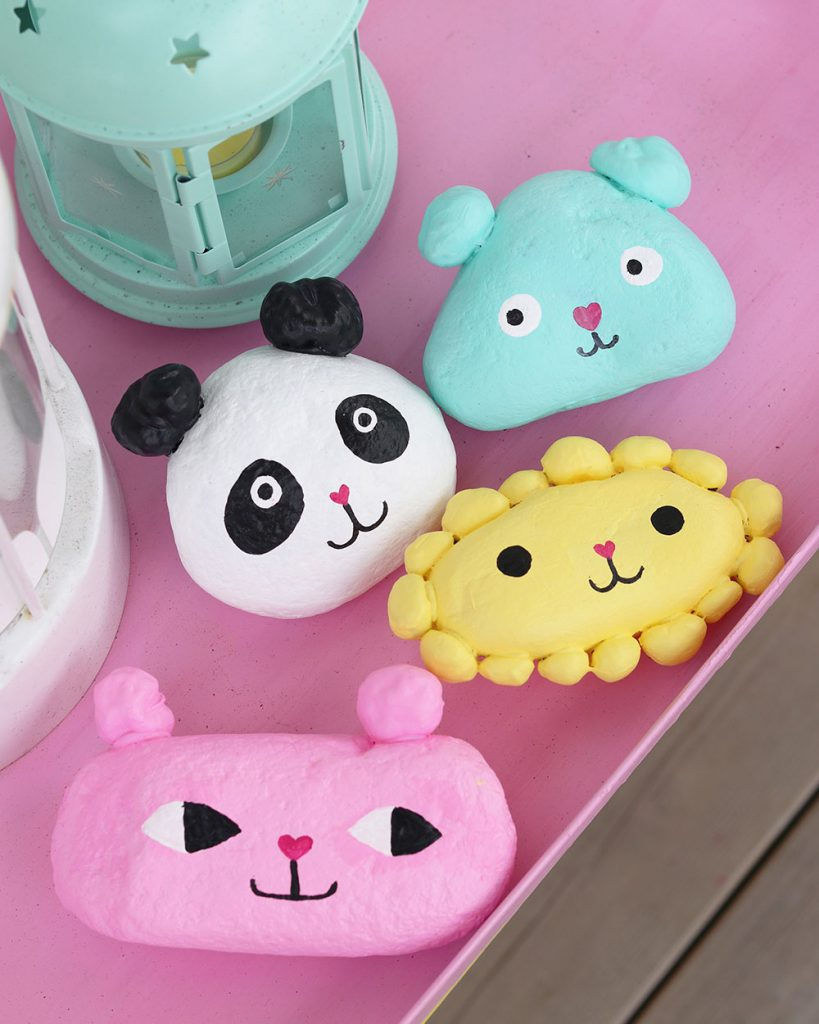- Ann-Charlotte Geissler
- 11 apr. 2019
- 4 min läsning
Uppdaterat: 15 aug. 2020
Swedens queen of kawaii, Kreativa Karin, makes cute colorful crafts. Karin is known for her pastel color palette and her way of making everything cute. She definitely makes the world a prettier place. We are suckers for her creations and wanted to know what inspires her and if she has any tips to share. Here is our Meet the maker-interview with Karin. Enjoy!

Who are you? Tell us a bit more about yourself
My name is Karin Andersson, I’m 40 years old and live on Hisingen in Gothenburg. I work in my studio, which is in a basement close to my home. I travel quite a lot around Sweden and arrange workshops together with IKEA, Barncancerfonden, houses of culture and libraries. I also put some of my time on planning, purchases, and administration. But most of all I want to spend time in my studio, creating while listening to a thrilling podcast.

How did you come to the creative place you are at today, what's your creative background?
I’ve always loved to create and being creative. I dreamed of going to art school, Konstfack in Stockholm. After high school, I applied to a preparatory course in Gävle but didn’t get accepted. By that time I lost my drive to pursue art school and moved to London, and after that Gothenburg. I worked in hotels and restaurants until I gave birth to my daughter in 2010. And by then I felt the need for a change of directions in my life, like so many other new moms. I took graphic design classes and got a diploma in visual merchandising. During my studies, I started an Instagram account and worked extra as a salesperson at IKEA. My goal was to get a job as an interior decorator and after six months at IKEA I couldn’t keep up with all the inquiries from Instagram. So I quit my job and started to work full time as a professional maker.

What do you try to achieve with the work you create?
To make people want to create! The best compliment I can get is that someone has been inspired to start making after seeing my creations.
I want to inspire parents and kids to make together.
Kreativa Karin, what’s the story behind the name?
When I started my Instagram account I wanted to have an easy and personal name. I thought a lot about building my personal brand from the start. I wanted people to get what I’m doing just by reading the brand name. Kreativa Karin just fit! I’m very particular with whom I collaborate. I’ve strong political views but don’t talk much about them in social media. I want to be personal but not private in my social media channel.
I believe that you have to be personal to create a successful personal brand.
Even if it’s a bit uncomfortable in the beginning you need to share your personal views. Your followers want to connect with you! People often stop me when I’m in the city and say the nicest things to me. Even if it makes me a bit awkward it really makes my whole day. It warms my heart.

How do you get in the right “creative mode” – what does your happy place look like?
I love hanging out in my studio. Most days I ride my bike there after I followed my daughter to school at 8:00. I put on some music and start the project of the day. I like to do several projects at the same time since there are drying times and other things to take into account. I’ve to-do-lists for the week on what to purchase, create, photograph, etc. I often look for inspiration on my mobile phone during the evening. I take lots of print screens and make notes on my phone when I get ideas or find things I want to try. Sometimes I take those ideas and use them in collaborations with companies.
What does your craft space look like?
Most people describe my studio as a colorful candy store for makers. I have a big table that seats eight people, which I use all the time. I’ve got a bar counter where I film my videos and bigger projects. The walls are covered with shelves and everything is sorted by color and type of material. I have so much material, both new and recycled. I have a comfy sofa that I use for rest and when working on social media. My studio is in a basement but has fairly good daylight, a small kitchen, and a toilet. Most of the 70 square meters are a big room where I go wild with my sewing machines, glue guns, paint, and scissors.

If I would like to get going with my creativity, what’s your advice?
Find inspiration! We all need inspiration. Try different materials and techniques and see what you like. Invest in good tools, like really sharp scissors, a glue gun and spray paint in your favorite colors.

Please share your top sources of inspiration
1. Pinterest is where I search for different materials. There is so many beautiful pictures and ideas.
2. Fashion and clothes inspire me a lot. They are faster on new trends, then the interior design field.
3. I use a color or a shape of something as a starting point when I develop my ideas. I do love patterns, especially graphical.












